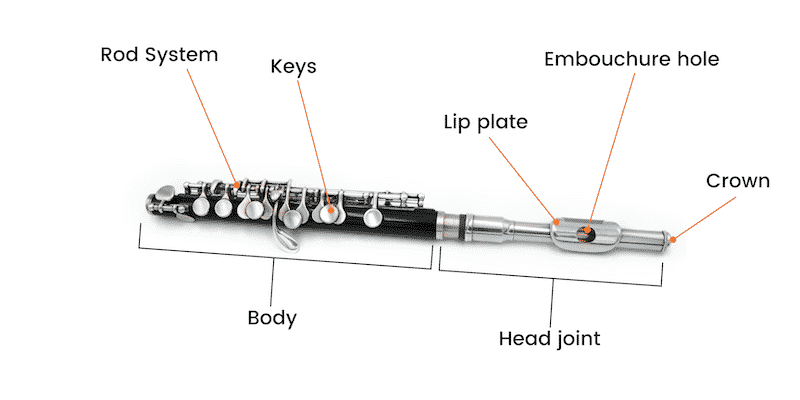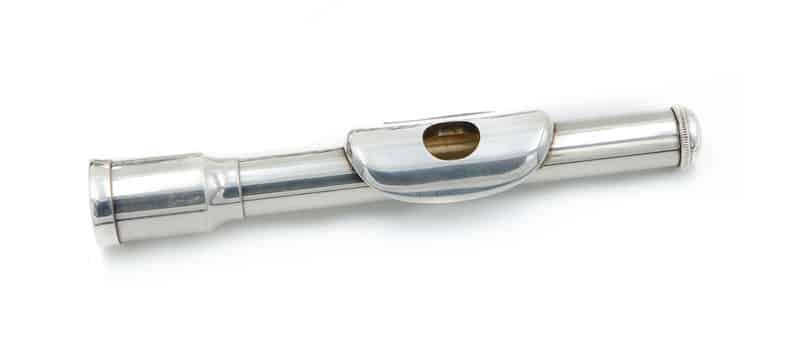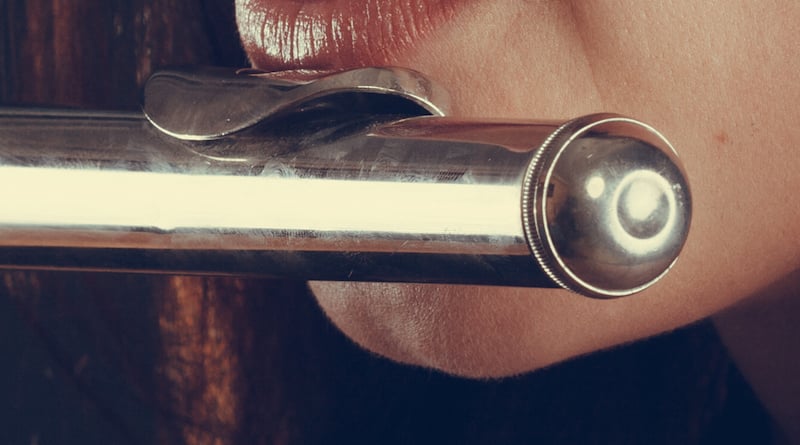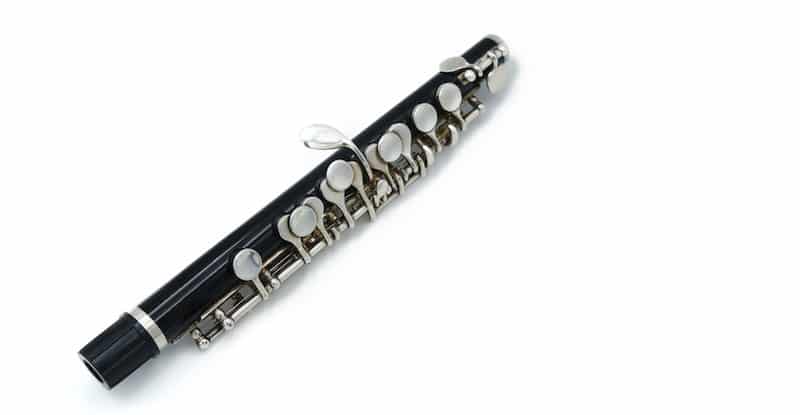“Piccolo,” which means small in Italian is the perfect word to describe the piccolo, which is roughly half the size of a regular flute.
Also referred to as an octave flute, it creates a piercing, high-pitched tone that one can easily hear above the rest of an ensemble.
Composers first used the piccolo’s sound in the 1700s to play higher notes than those available on existing instruments. Most piccolo parts are written with the intent of emphasizing their unique timbre.
Piccolos are now used in orchestras, concert bands, and many other groups because they are unique sounding among all instruments.
Anatomy of a Piccolo

A piccolo consists of two main parts: the head joint and the body.
Unlike the parts of a flute, It does not have a foot joint as a flute does and is also the smallest instrument in the flute section of an orchestra, approximately half the length of a traditional concert flute.
It’s played by the musicians putting their mouth to one end of the tube and blowing air across a small opening.
The air then travels down the tube, and out a small hole in the other end which creates the sound.
This pitch is changed by covering and uncovering the tone holes by depressing the keys.
The Head Joint

The first piece we’ll look at on a piccolo is the head joint which is a very important piece to produce sound.
The head joint is the part of the instrument that makes contact with the player’s lips and transmits vibration to create sound.
It can also affect how loud the piccolo will sound, its tone, articulation and how well the instrument will project.
Typically, piccolo head joints are made from metals like Nickel, Gold or Silber but you can find them made from plastic, composite materials, and even wood which is the most popular with professional players.
Crown

A piccolo’s crown is the part of the instrument at the very end and is used to seal the instrument to force the air to travel down the piccolo past the keyholes.
They’re often highly decorated and ornamental (which is where they get their name from) and can be made from a number of different materials too.
Cork
Just below the crown is the cork which can affect the length of the tube that the air travels down the piccolo which in turn, can determine the pitch, tone, and tuning of the instrument.
It is often made of dense cork, though you can also find it in rubber or plastic.
It is inserted at the narrow end of the head joint to prevent air from leaking out and keep it free of debris and other things that may affect its sound.
Because the head joint cork’s position directly impacts the tuning of the flute and is not intended to be adjusted regularly.
Lip Plate
The lip plate is a part of a piccolo that is soldered on to the head joint of the piccolo and is where the musician rests their lower lip while playing.
The purpose of the lip plate is to help the player form the correct embouchure to produce sound.
Lip plate material can vary among piccolos, but most are made of metal or hard plastic.
Most piccoloists learn to play on a standard flute first so many beginner piccolos will have a silver lip plate similar to a flute.
Although some piccolos don’t even have a lip plate and just have an embouchure hole which we’ll look at next.
Embouchure Hole
The embouchure hole is the small opening in the head joint that the player blows over to create sound.
The tone that comes out is a combination of how hard you’re blowing and the shape of your mouth when you blow into it.
Some of these holes are straight, while others are tapered (undercut) which can also affect the tone of the piccolo.
This hole’s size and shape vary depending on its cut, which affects the instrument’s overall tone quality.
The Body

The body of the piccolo is where the rod system and keys are attached and it can be made of wood, plastic, or metal.
Wood is commonly used for indoor orchestra performances, while plastic or metal is recommended for outdoor playing because those materials are not as sensitive to changes in temperature and drastic climate changes can cause a wooden body to crack.
There are 13 holes in the body called tone holes and these are what affect the pitch depending on which ones are covered, and which ones are not.
Keys
The keys on the piccolo are the parts that cover the tone holes and this is what changes the pitch of the notes.
The keys are often covered with pads which ensure that the tone hole is completely sealed when the musician presses it down.
Rod System
The rod system is the part that connects the keys of the piccolo and is mounted on the underside of the instrument, usually in the center.
The keys activate the rod system to cover and uncover tone holes which allows the musician to create different pitches.
The tones you hear are a result of this arrangement of rods covering or uncovering the tone holes in different combinations.
Summing Up the Piccolo’s Different Parts
As you can see, the piccolo is a complex instrument that is very similar to the flute but on a lot smaller scale.
Another thing is that the different materials, sizes, and shapes have a significant impact on the sound quality, tone, and volume of the instrument which is important for such a small instrument to cut through above the other instruments in an orchestra.
From its construction to the function of its parts, we hope our brief guide has given you a better understanding of how this beautiful piece works.

